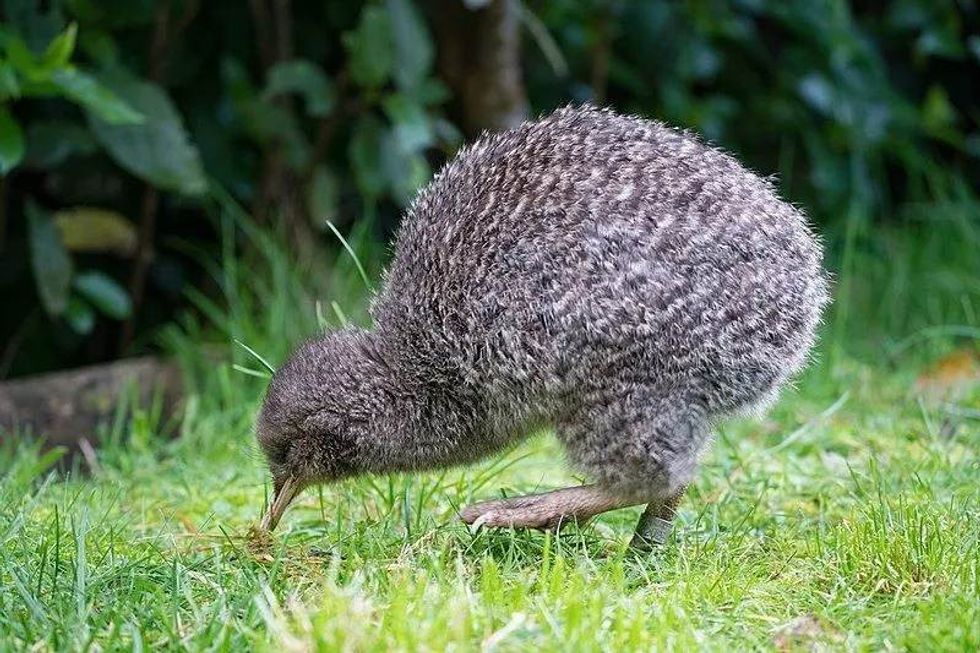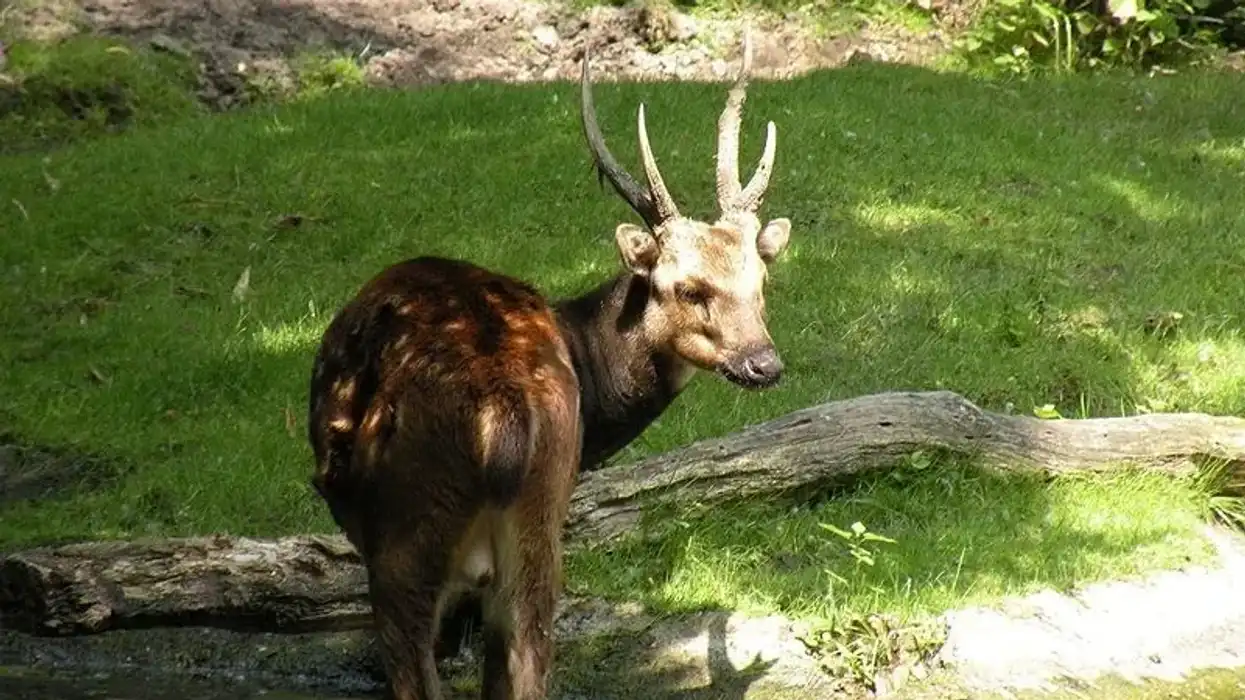The little spotted kiwi, scientifically known as Apteryx owenii, belongs to the genus Apteryx. It is a tiny gray mottled bird that cannot fly.
Also is the smaller breed among the five kiwi species. Native to New Zealand, it is one of the ancient birds of the North Island and South Island and could have evolved 30 million years ago.
They are omnivores and prefer terrestrial habitats. These ground-dwelling birds are solitary and sedentary. They also construct their nest in the ground.
The population of the kiwis was affected due to historical deforestation, became extinct in the North Island of New Zealand, and endangered in the South Islands. So they were reintroduced in offshore islands Such as Kapiti Island, Tiritiri Matangi, and Long Island and are secured in reserves like Zealandia and national parks.
These kiwis are monogamous and continue the relationship once established for over 20 years.
Have there been aspects of interest in our content? Then, we present you with some more interesting fact files on glossy starling facts and Gloster canary facts.
Little Spotted Kiwi Interesting Facts
What type of animal is a little spotted kiwi?
The little spotted kiwi is a flightless bird of the genus Apteryx. It is a ratite of the Apterygidae family.
What class of animal does a little spotted kiwi belong to?
The spotted kiwi (Apteryx owenii) is a bird, and it belongs to the Aves class. It is a type of kiwi, which is a common flightless bird. Other popular kiwi species include the North Island brown kiwi, southern brown kiwi, and great spotted kiwi.
How many little spotted kiwis are there in the world?
According to the numbers of the International Union for Conservation of Nature, there are at present 1670 mature kiwis of this species.
Hen Island, Long Island, and Chalky Island contain 50 birds, Kapiti Island alone accounts for 1200, and Red Mercury Island has 70, Tiritiri Matangi count is 80, the Zealandia Wildlife Sanctuary maintains 120, Motuihe Island has 30, Anchor Island has 20 birds.
Where does a little spotted kiwi live?
The little spotted kiwi is local to Kapiti Island and also endemic to the remote forests of the South Island of New Zealand and small of. In pre-European times their population was widespread in both the North Island and South Island. But now, the population is distributed on the offshore islands.
What is a little spotted kiwi's habitat?
The little spotted kiwi lives in temperate broadleaf mixed forests, temperate grasslands, and shrublands. The little spotted kiwi habitat is strictly terrestrial.
Who do little spotted kiwis live with?
The little spotted kiwi is a solitary animal and prefers to be alone except during breeding season. In fact, these birds are territorial and give alert calls in the night to keep others informed of their territory and competes with other members of their species with sharp claws.
During this tiff, the bird loses feathers on the ground. However, they try not to lose their breeding partner once paired, occasionally sing duets together.
How long does a little spotted kiwi live?
The little spotted kiwi could live from 33 to 45 years in the wild. In general, kiwi birds can live from 20 to 50 years.
How do they reproduce?
The little spotted kiwi is known to breed in the early spring. The breeding season occurs from July to January.
The breeding pair dig the burrow near plant material and establish their nest. These little kiwi birds can lay one or two eggs in a clutch. The incubation period is from 63-76 days, and the nesting eggs are taken care of by the males.
The weight of the egg is 26 % of the bird's body weight. The kiwi chicks are well developed to survive inadequate food and harsh weather conditions.
What is their conservation status?
The little kiwis are presently placed in the Red List of the International Union for Conservation of Nature, and their conservation status is Near Threatened. Being the smallest kiwi species, the little spotted kiwi (Apteryx owenii) is easily exposed to predators like cats, dogs, and stoats.
However, the population is now confined to reserves at several off-shore islands, predominantly Kapiti Island, predator-free.
Little Spotted Kiwi Fun Facts
What do little spotted kiwis look like?

The little spotted kiwi is a smaller version of the ratite (group of flightless birds) group, which also includes ostriches. They are small-sized and short-legged when compared to other ratites. Their fur coat is actually a flyer of thin hair of feathers to suit their life on the ground. It also helps them to camouflage against predators.
The length of males and females is between 14 - 18 in (35 - 45 cm). But there is a variation in weight. Males weigh between 1.9 - 3.0 lb (0.88 - 1.36 kg ), and that of females is between 2.2-4.3 lb (1 - 1.95 kg).
The feathers are mottled gray with a white touch-up and a shaggy look. Their beak is in the ivory shade, and their legs are pale. These kiwis have vibrissae feathers around their beak. The pygostyle fills the absence of the tail.
How cute are they?
These birds of New Zealand are small and cute. Added to their cuteness is their shy nature. They are plumpy with the grounded belly on their short legs, and a little head with a long beak is a comic visual.
How do they communicate?
The little spotted kiwi relies on audio cues and sense of smell as they have poor vision.
They produce a loud audio call—A little spotted kiwi call to signal their territory and to maintain contact with partners.
They have unusual nostrils on bills that provide them with smell receptors.
How big is a little spotted kiwi?
The length of this kiwi is between 14-18 in (35 - 45 cm). So the little spotted kiwi size is smaller than the great spotted kiwi, which is 18 - 20 in (45 - 50 cm).
How fast can a little spotted kiwi fly?
The little kiwi is flightless. It has tiny vestigial wings and cannot fly.
How much does a little spotted kiwi weigh?
The little spotted kiwi (Apteryx owenii) is dimorphic in weight, the males weigh between 1.9-3.0 lb (0.88 - 1.36 kg ), and the females can weigh between 2.2-4.3 lb (1 - 1.95 kg).
What are the male and female names of the species?
There are no sex-specific names for little spotted kiwis.
What would you call a baby little spotted kiwi?
A baby little spotted kiwi is called a chick.
What do they eat?
This species of kiwi are omnivores, and they eat berries and seeds as food. Bugs, worms, and grubs are also part of their diet.
They dig deep into the ground and sense their prey even before seeing it with the help of nostrils at the end of their beak. As they have poor eyesight, hence they depend on their sense of smell.
Are they dangerous?
These little flightless birds are not dangerous, and when approached by humans, these species do not attack. Instead, they shy away and run from those premises rather than confronting them.
Would they make a good pet?
Being the smallest species of kiwi, these birds are adorable to have as pets. But as they are wild and since their population is endangered, it is not legal to have them as pets.
Did you know...
Accounting for their round-bellied shape, these birds are also called Kiwi pukupuku.
These birds are active at night and sleep in the mornings. They either forage for food or guard their territory through the night.
Naming the little spotted kiwi bird
The little spotted kiwi is one of the five kiwi species and the smallest in size of all. Hence it is given the name. Also, the name kiwi is derived from the little spotted kiwi sound of kee-wee, kee-wee.
Why is the little spotted kiwi special?
This species of kiwi are flightless. Instead, they have nostrils at the end of the long beak.
The spotted kiwi (Apteryx owenii) has an excellent memory and can store up to incidents as old as five years.
The little spotted kiwi is the smallest species. They have a body temperature of 100 degrees Fahrenheit (38 Celsius), which is the lowest of all the birds.
The eggs of these birds are pretty giant. They are 26% to that of the female's weight, which is the largest any bird could ever have.
While other birds have two or three toes on their thick foot, the little spotted kiwi has four toes.
Here at Kidadl, we have carefully created lots of interesting family-friendly animal facts for everyone to discover! Learn more about some other bird from our gnatcatcher interesting facts or giant kingfisher surprising facts pages.
You can even occupy yourself at home by coloring in one of our free printable Little spotted kiwi coloring pages.










